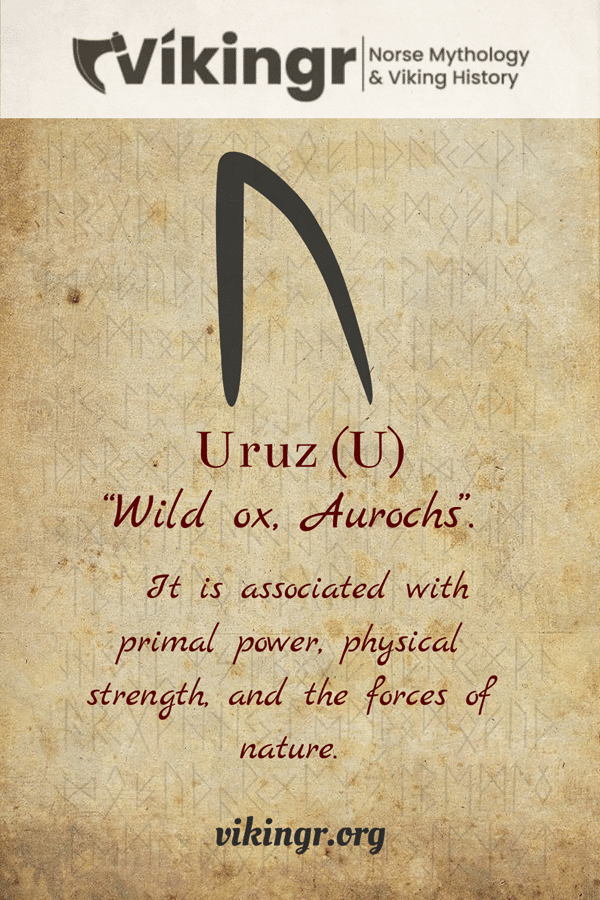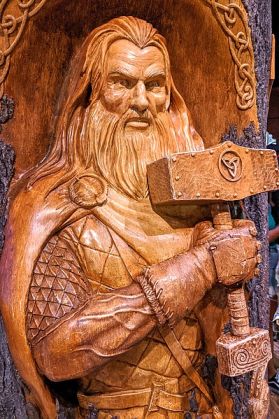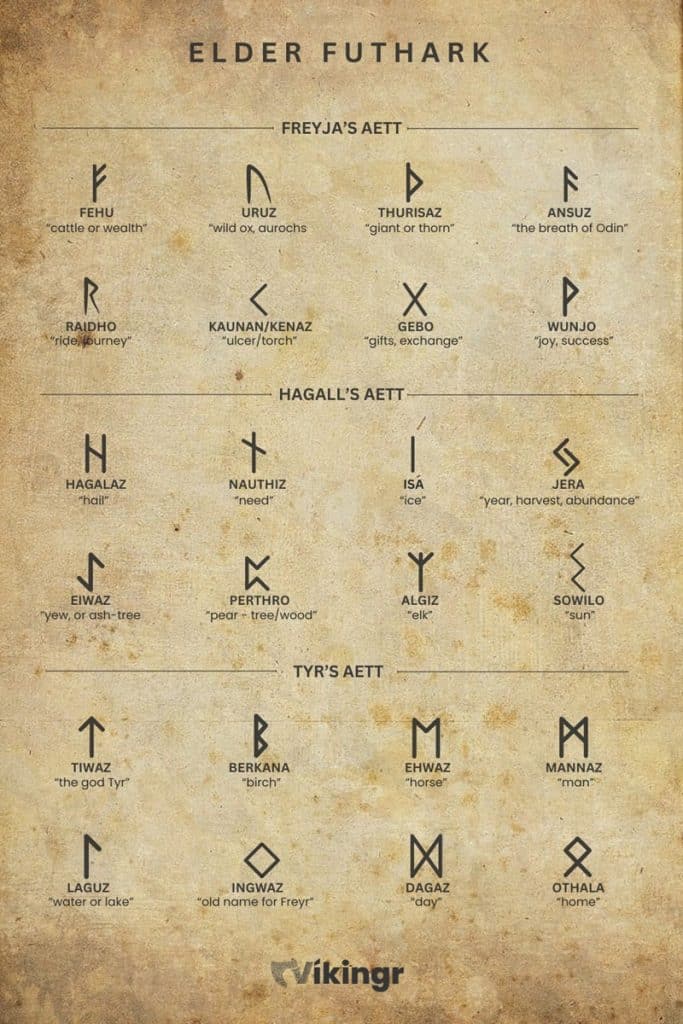The Elder Futhark, an ancient Germanic alphabet etched into the annals of time, whispers tales of our forebears, the Vikings. Among these cryptic symbols, Uruz, the second rune, stands tall, embodying strength and vitality. In this post, I will try to unravel its enigma.
Uruz: Background and Description
In the hushed whispers of the past, we find Uruz, a rune steeped in mystery and power. Born from the Elder Futhark, the oldest form of the runic alphabets, it finds its roots in the Proto-Germanic language.
Nestled between Fehu, the rune of wealth, and Thurisaz, the rune of chaos and protection, it holds a unique place in this ancient script. We name the Elder Futhark after its first six runes (Fehu, Uruz, Thurisaz, Ansuz, Raidho, and Kenaz). Between the 2nd to 8th centuries, people across Scandinavia and other Germanic lands used it widely. Possibly even earlier than that as a recently found runestone was dated to 0-200 AD.
Derived from the Proto-Germanic word “ūruz” meaning “aurochs” (a now-extinct species of wild ox), it was a symbol of raw, untamed power and health.

Graphical Representation
Uruz, with its simple yet potent design, is a symbol that resonates with primal strength. It resembles an upward arrow. Though the design has seen minor variations across different regions and periods, its essence remains unchanged – a testament to the resilience of the aurochs it represents.
Phonetic Value
In the Proto-Germanic language, Uruz corresponds to the vowel ‘U’. As the Germanic languages evolved, so did the phonetic value, adapting to the linguistic shifts of the time.
Symbolic Meaning of the Uruz Rune
Uruz, the rune of the wild aurochs, is a symbol of raw strength and speed as well as untamed potential. It embodies the spirit of endurance, symbolizing the ability to face challenges head-on. Furthermore, the aurochs, a beast known for its vitality and formidable presence, lends these attributes to the Uruz rune.

Uruz is often associated with the thunder god, Thor. Known for his strength and courage, Thor’s association with Uruz underscores the rune’s symbolic connection to physical power and resilience.
The Aett and its Symbolism
Uruz belongs to the first aett of the Elder Futhark. This group of eight runes ia associated with the Vanir deities Freyja and Freyr. This aett, often called Freyr’s aett, is a symbol of creation and nurturing, embodying the life-giving aspects of the universe.
The first aett is a journey of self-discovery, a path that leads us from the material (Fehu) to the spiritual (Wunjo). Uruz, standing as the second rune in this sequence, represents the raw material that is shaped and honed through the trials and tribulations of life.

Elder Futhark Quiz
Do you want to test your knowledge of Elder Futhark runes? Then this quiz is perfect for you!
Don’t forget to play our other games as well!
Uruz Used in Divination and Magic

I don’t practice divination myself, but the historical and cultural importance of these practices captivates me. In runic divination, people often interpret Uruz as a symbol of physical health, vitality, and the power to conquer challenges.
In history, people saw Uruz as a potent rune in spellwork, invoking strength, courage, and healing. They would carve it into talismans or etch it onto weapons, trusting it to fill the bearer with the strength and vitality of the aurochs.
In modern times, the belief in the magical properties of runes has experienced a comeback. The cultural and historical significance of these symbols also continues to fascinate scholars and enthusiasts alike. The Uruz rune, moreover with its association with strength and vitality, remains a powerful symbol in the collective memory of our ancient past.
Uruz to Úr in the Younger Futhark – Steadfast Strength
During the period when the Elder Futhark was evolving into the Younger Futhark, around the 7th and 8th centuries, Uruz stood unaltered. It continues to embody strength and vitality, symbolizing the ‘u’ sound. This rune’s unwavering representation of primal force and resilience is mirrored in its unchanged form. In the Norse runes, it is referred to as úr.
Frequently Asked Questions
It symbolizes raw strength, vitality, and endurance, akin to the attributes of the wild aurochs it represents.
In the Proto-Germanic language, Uruz corresponds to the vowel ‘U’.
It belongs to the first aett of the Elder Futhark, associated with the Vanir gods Freyja and Freyr.
Featured Image Credit: BK, Public domain, via Wikimedia Commons
